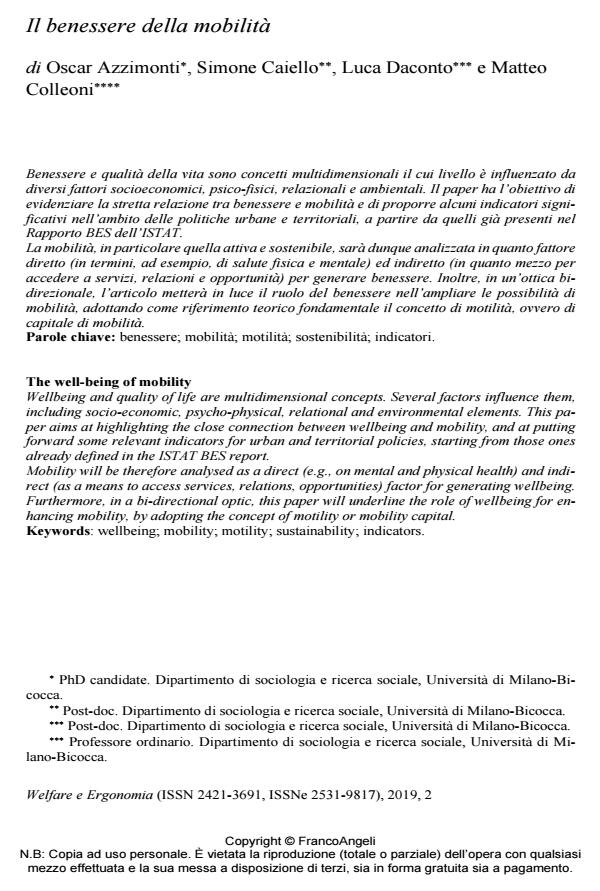The well-being of mobility
Journal title WELFARE E ERGONOMIA
Author/s Oscar Azzimonti, Simone Caiello, Luca Daconto, Matteo Colleoni
Publishing Year 2020 Issue 2019/2
Language Italian Pages 10 P. 57-66 File size 226 KB
DOI 10.3280/WE2019-002005
DOI is like a bar code for intellectual property: to have more infomation
click here
Below, you can see the article first page
If you want to buy this article in PDF format, you can do it, following the instructions to buy download credits

FrancoAngeli is member of Publishers International Linking Association, Inc (PILA), a not-for-profit association which run the CrossRef service enabling links to and from online scholarly content.
Wellbeing and quality of life are multidimensional concepts. Several factors influence them, including socio-economic, psycho-physical, relational and environmental elements. This pa-per aims at highlighting the close connection between wellbeing and mobility, and at putting forward some relevant indicators for urban and territorial policies, starting from those ones already defined in the ISTAT BES report. Mobility will be therefore analysed as a direct (e.g., on mental and physical health) and indi-rect (as a means to access services, relations, opportunities) factor for generating wellbeing. Furthermore, in a bi-directional optic, this paper will underline the role of wellbeing for en-hancing mobility, by adopting the concept of motility or mobility capital.
Keywords: Wellbeing; mobility; motility; sustainability; indicators.
Oscar Azzimonti, Simone Caiello, Luca Daconto, Matteo Colleoni, Il benessere della mobilità in "WELFARE E ERGONOMIA" 2/2019, pp 57-66, DOI: 10.3280/WE2019-002005